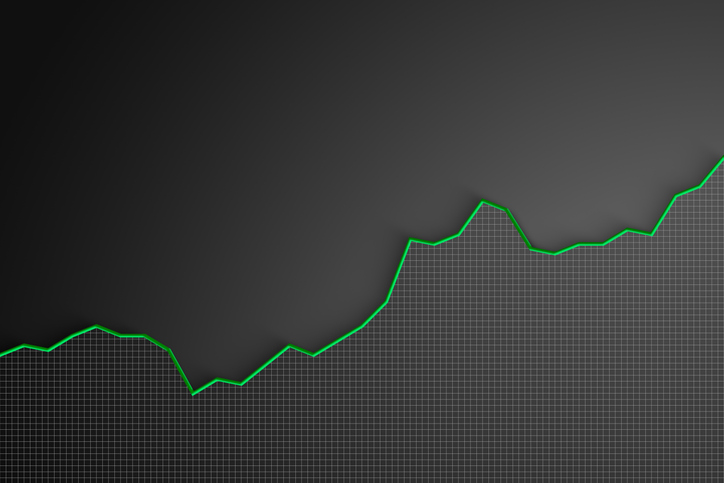Big Returns From Cowtown
An out-of-the-limelight winner in the small-company field.
These days, trying to find a good small-company fund that will take your money is like rummaging through a picked-over bushel of apples. That's because most of the first-rate funds in this category long ago shut their doors to new investors. Those that haven't are apt to display such flaws as an inexperienced manager, steep fees or too many assets under management.
Then there's LKCM Small Cap Equity. With a name like that, small wonder it isn't better known. (It's run by a Fort Worth, Tex., firm, Luther King Capital Management.) The fund, which buys shares of both fast-growing and value-oriented companies, has attracted investors almost exclusively by word of mouth since its inception a dozen years ago. Its expense ratio is a relatively low 0.96%, and assets amount to just $525 million. Behind the scenes is LKCM's founder, Luther King, who has been managing money for more than 25 years. Steve Purvis, who came on board as co-manager in 1998, is responsible for the fund's day-to-day operations.
Steady as you go
This is not a shoot-out-the-lights fund, although you wouldn't know it judging by its recent performance. The fund (symbol LKSCX; 800-688-5526; $10,000 minimum investment) returned an annualized 17% over the past five years to April 3; on average, small-company funds returned an annualized 12%. Last year, LKCM landed in the top 5% of small-company funds, thanks to large bets on energy and industrial materials. Long-term performance also shines bright, with an annualized 14% return over the past decade, trumping the small-company field by an average of three percentage points per year -- and with 20% less volatility.

Sign up for Kiplinger’s Free E-Newsletters
Profit and prosper with the best of expert advice on investing, taxes, retirement, personal finance and more - straight to your e-mail.
Profit and prosper with the best of expert advice - straight to your e-mail.
Purvis picks his stocks cautiously. He avoids start-ups and early-stage companies in favor of high-quality firms that operate in a niche or offer unique products or services. Consumer stocks blend easily into this strategy. "What we really like are companies that have already proven they are at a competitive advantage and are well positioned to grow," says Purvis, 42. But Purvis aims to pay as little as possible for that growth. Especially attractive are companies that generate strong free cash flow and reinvest the cash in the business. "We like that internal compounding because that's how real wealth is created," he says.
Purvis takes other measures to reduce risk, starting with diversifying the fund's holdings across sectors. None of LKCM's 90 holdings accounts for more than 2% of the portfolio. Annual turnover averages a relatively low 50%, which means that Purvis holds his stocks for two years, on average. Still, the fund includes a half-dozen companies it has held since the 1990s, including Tractor Supply, which sells equipment to hobby farmers, and Mobile Mini, which sells portable storage containers and mobile offices.
The fund took on a greater growth tilt during the past year and a half, as Purvis found more attractively valued technology and health-care companies. Because he avoids overly risky stocks, the fund tends to lag its small-cap peers in speculative markets, which was the case in 2003. Although historically LKCM has taken on sizable cash stakes as high as 25% -- which caused returns to lag in the late 1990s -- cash currently makes up less than 5% of the portfolio.
In the end, it's not spectacular short-term returns that make LKCM a standout among small-company funds. The fact that it still accepts new investors is certainly a selling point. But what's most inviting is Purvis's low-risk approach and consistent record.
Get Kiplinger Today newsletter — free
Profit and prosper with the best of Kiplinger's advice on investing, taxes, retirement, personal finance and much more. Delivered daily. Enter your email in the box and click Sign Me Up.
-
 Stock Market Today: Stocks Soar on China Trade Talk Hopes
Stock Market Today: Stocks Soar on China Trade Talk HopesTreasury Secretary Bessent said current U.S.-China trade relations are unsustainable and signaled hopes for negotiations.
By Karee Venema
-
 2026 Disney Dining Plan Returns: Free Dining for Kids & Resort Benefits
2026 Disney Dining Plan Returns: Free Dining for Kids & Resort BenefitsPlan your 2026 Walt Disney World vacation now. Learn about the returning Disney Dining Plan, how kids aged three to nine eat free, and the exclusive benefits of staying at a Disney Resort hotel.
By Carla Ayers
-
 Best Banks for High-Net-Worth Clients
Best Banks for High-Net-Worth Clientswealth management These banks welcome customers who keep high balances in deposit and investment accounts, showering them with fee breaks and access to financial-planning services.
By Lisa Gerstner
-
 Stock Market Holidays in 2025: NYSE, NASDAQ and Wall Street Holidays
Stock Market Holidays in 2025: NYSE, NASDAQ and Wall Street HolidaysMarkets When are the stock market holidays? Here, we look at which days the NYSE, Nasdaq and bond markets are off in 2025.
By Kyle Woodley
-
 Stock Market Trading Hours: What Time Is the Stock Market Open Today?
Stock Market Trading Hours: What Time Is the Stock Market Open Today?Markets When does the market open? While the stock market does have regular hours, trading doesn't necessarily stop when the major exchanges close.
By Michael DeSenne
-
 Bogleheads Stay the Course
Bogleheads Stay the CourseBears and market volatility don’t scare these die-hard Vanguard investors.
By Kim Clark
-
 The Current I-Bond Rate Until May Is Mildly Attractive. Here's Why.
The Current I-Bond Rate Until May Is Mildly Attractive. Here's Why.Investing for Income The current I-bond rate is active until November 2024 and presents an attractive value, if not as attractive as in the recent past.
By David Muhlbaum
-
 What Are I-Bonds? Inflation Made Them Popular. What Now?
What Are I-Bonds? Inflation Made Them Popular. What Now?savings bonds Inflation has made Series I savings bonds, known as I-bonds, enormously popular with risk-averse investors. So how do they work?
By Lisa Gerstner
-
 This New Sustainable ETF’s Pitch? Give Back Profits.
This New Sustainable ETF’s Pitch? Give Back Profits.investing Newday’s ETF partners with UNICEF and other groups.
By Ellen Kennedy
-
 As the Market Falls, New Retirees Need a Plan
As the Market Falls, New Retirees Need a Planretirement If you’re in the early stages of your retirement, you’re likely in a rough spot watching your portfolio shrink. We have some strategies to make the best of things.
By David Rodeck